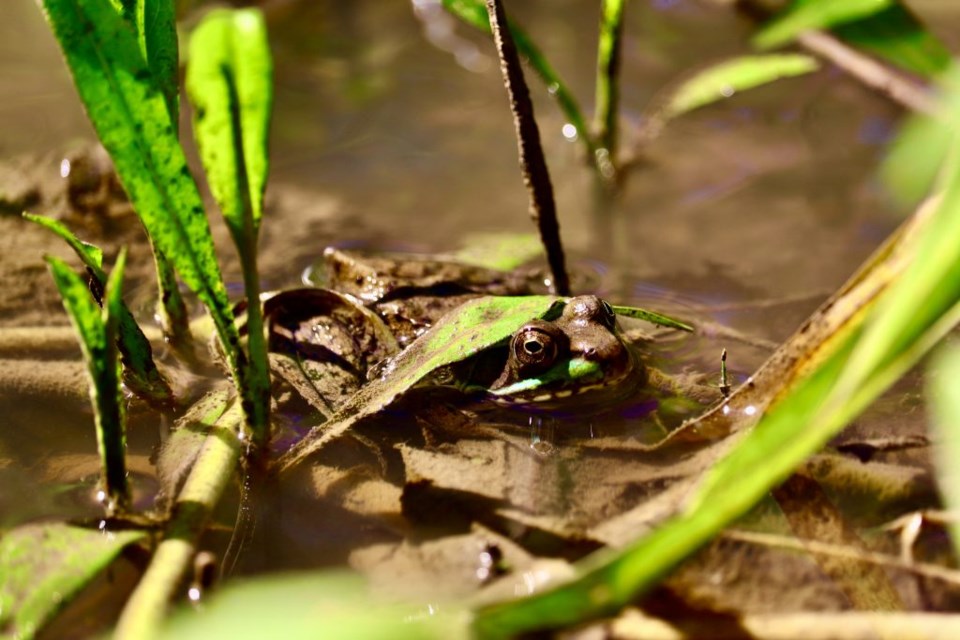
It’s not too often that by early June, we’ve experienced not one, but two profound heat waves here in NOTL. It’s not impossible, but it’s certainly not common. Daytime highs of low 30s and an unseasonably dry spring have set the tone for what the remainder of summer may look like for our town, its locals, and local wildlife.
In the natural world, especially in a region with four distinct seasons, wildlife is considerably adaptable. We’ve got to give credit where it’s due. Every year, frogs emerge from hibernation to call in the early spring sun, only to get put on pause by another flash freeze or a last minute winter storm. Bees, snakes, and turtles enjoy more than half a year of positive temperatures before they return to some sort of dormancy, where the sun doesn’t shine. Deer, eastern cottontails, and coyotes will use their mobility strengths to travel and find essential resources when things begin to dry up.
I recollect growing up with warm springs, or a spring with a few hot days, but never a hot and dry spring. Of course, it was during the first heat wave in late May that I recently planted 32 native tree species. Every morning before work, I would step out into the morning and its tropical air to water each tree. The earth was hard, cracked and crumbly — not so typical for a NOTL spring.
However, I began to notice a pleasant theme when I would walk up to the base of the tree with a water bucket in hand. Without fail, I could find toads hunkered down into the damp soil at the base of the tree, taking full and clever advantage of yesterday’s watering session. They intentionally wiggle their bodies a couple inches into the marginally wetter soil, and during the hot spells, this is the only place I’d see toads on my 12 acres. If you have a pile of mulch, soil, or a consistently watered spot in your yard, this is where these warty amphibians are most likely hanging out.
While tending to the “tree babies” and their associated amphibian friends, I also got polka-dotted in dog ticks. Many people have asked me over the past five years or so, ‘is it just me, or, are the ticks really bad this year?’ Although there has been a slight uptick (pun intended) in their prevalence over the years, this year seems exceptional. This is most likely the result of having two short and warm winters in a row, and then catapulting straight into summer weather. Another couple of factors to consider are how NOTL’s explosive suburban growth have brought more wildlife (tick carriers, such as birds, rabbits and deer) into more backyards and other areas, as they adapt to a dwindling green landscape.
While hiking in a local woodlot with a good friend this past week, I noticed the classic effects of how even a small forest can become an ice cube refuge. On the outside of the treeline, we felt like we were walking in some sort of intense Texan heat. On the inside of the forest, the temperature must have dropped a handful of degrees. The soil was dark with moisture, where scores of Solomon’s seals, Jack-in-the-pulpit, and trilliums grew (their iconic flowers now seasonally shrivelled up). You can also bet that deer and coyotes take shelter in these forested areas in the heat of the day.
The surrounding, scorched vineyards were surely but silently benefitting from the forest, which was working hard, if you will, to keep all that soil moisture on the property, and provide relief from the direct and intense UV rays.
If NOTL had a higher coverage of forest and wetland features, we wouldn’t see such severe desiccation of our local creeks. Seasonally, it is expected that One, Two, Four, and Eight Mile Creeks all become reduced in water flow come summer, and that’s pretty normal, versus a sign of bad health. What sparks concern though is when these water levels begin to drop much earlier in the year. This allows more time for the waterways to be exposed to ambient heat and sunlight, which leads to higher rates of evaporation, warmer water temperatures, and the explosive growth of algae, which deoxygenates the water. This leaves local fish species which depend on deeper and healthier waters in a stranded setting, and that could be troubling for birds which hunt inland versus on the open water.
Arguably, southern Ontario is one of the most difficult geographical locations in the world for which to make accurate, long-term seasonal forecasts. We have far too many variables to consider, as our weather systems and climate as a whole are connected to other weather systems of the U.S. and the world. Considering that water is the ultimate life-giver and taker, I would suspect the wildlife is going to congregate at the local watering hole, just like many locals are looking to do this coming weekend as the province moves to step 1 of its reopening.NOTL’s wildlife, forests gear up for long, hot summer